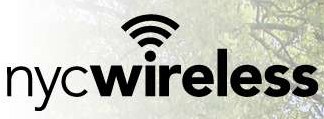New York State has won $6.3 million in federal stimulus grant money to draw a map of broadband availability in the state. That’s a lot of money to draw a map.
Hopefully it will deliver a better result than the map that’s already online: inaccurate, slow to load, incomplete, and doesn’t play well with some browsers.
The NY State Office of Cyber Security is responsible for administering the project, which is an improvement over provider-infested (Well)-Connected Nation that draws maps for some other states. The one developed for Texas was so bad, it became fodder in an election campaign to ridicule the man who approved it.
Theoretically, people can enter a street address and see a list of broadband providers who offer service in their neighborhoods, including the types of service and advertised service speeds. But most of the data is voluntarily provided by the service providers themselves, and we know they have no reason to exaggerate, right?
Here at Stop the Cap! HQ, we decided to give the map a test run to see what it claimed was available here in the town of Brighton, a suburb just southeast of the city of Rochester, N.Y.:
Just to assist readers, the orange color represents fiber access, the blue represents cable broadband, and the pink-salmon represents DSL. The results are actually an overlay of various service providers. Time Warner Cable service is available throughout the 14618 zip code and the pockets of fiber are targeting business parks and medical offices. These results appear generally accurate. What is missing is an accurate depiction of DSL service. That may be because Frontier Communications, the local telephone company, is not listed as a participant in the mapping project. While DSL performs dreadfully in a number of areas in this zip code, it is generally available for most residents.
The results for wireless providers were a real hoot (speed results are for downstream and upstream speeds, respectively):
| AT&T Mobility | Mobile | 1.5 mbps – 3 mbps | 768 kbps – 1.5 mbps |
| Leap Wireless International | Mobile | 768 kbps – 1.5 mbps | 768 kbps – 1.5 mbps |
| Sprint Nextel | Mobile | 768 kbps – 1.5 mbps | 200 kbps -768 kbps |
| Verizon Wireless | Mobile | not reported | not reported |
(Note to AT&T: In your dreams.)
Only one of these results represent actual speeds seen from wireless broadband providers in this neighborhood, and we’ve tested most of them. Sprint Nextel can manage 768kbps connections on its 3G network, and even faster speeds on its 4G network. AT&T’s claimed 1.5-3Mbps is laughable. Leap Wireless (a/k/a Cricket) delivers an average of 500-600kbps, with occasional bursts of 700kbps in this area. Verizon typically has the best coverage but there is no data to compare.
The mapping folks have a lot of work to do to map actual wireless speeds around the state, not simply take the word of providers about the speeds they deliver. New Yorkers can take a speed test and presumably help create that database. The link is available at the top right of this story.
Ostensibly the map will allow the state to identify areas where high-speed Internet access is lacking so those gaps in coverage can be addressed. Gov. David Paterson has made a priority of extending affordable high-speed Internet access to all New Yorkers. How a state with a budget deficit that approached $9.2 billion this summer can map its way towards that may require another grant.
Thanks to Stop the Cap! reader Paul for letting us know.


 Subscribe
Subscribe






